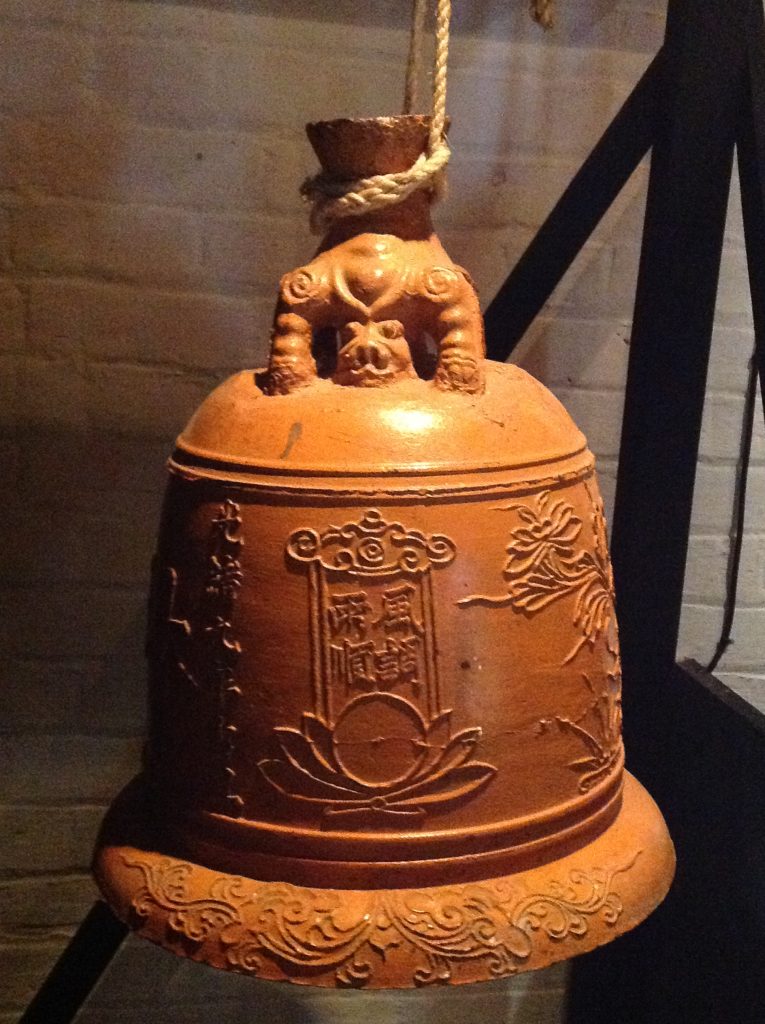
Made in the southern China city of Foshan (佛山) for a temple in the northern NSW town of Tingha and now in the McCrossin’s Mill Museum of Uralla. This temple bell tells the story of the rise and decline of Chinese Australian communities in rural NSW. Not gold but tin attracted many Chinese men to Tingha where the very similar low capital investment style of alluvial tin processing allowed for hard earning but steady profits. Some of these profits, as in the tin mining communities of north-east Tasmanian (see No.10) were invested in the erection of a community temple. Foshan was and is famous for pottery, Kung Fu and temple embellishments, and this is where nearly all the temple artifacts of Australia’s 19th century Chinese temples were purchased.
In the town of Tingha the tin miners gradually moved on to other occupations or returned to China until the temple was abandoned as the last custodians left or died. Unlike Tasmania (see No.10) however there was no established community members who sought to protect the temple artifacts and certainly no local museum able or willing to preserve them. Instead as happened in many rural localities the temple was looted and its artifacts scattered, destroyed or used as exotic souvenirs in the homes of locals.
In the case of the bell of Tingha it was used for many years as a flower pot before being recognised for what it was and donated to the McCrossin’s Mill Museum in Uralla. There the bell was able to re-join a collection from the same Tingha temple that had spent many years in a shed before a member of the Uralla based historical society also recognised its value and acquired the artifacts. The McCrossin’s Mill Museum has now erected a partial recreation of the original Tingha Temple.

